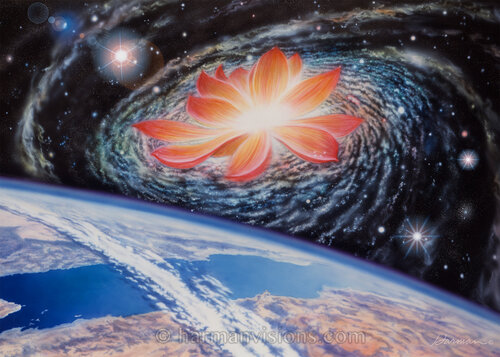By Sheyna Haisman-Holmes
There are six basic principles in Ayurveda called the Siddhanta Principles. Siddhanta means the truth of all knowledge. The following principles are intuitive and simple, based on insight of where we are in the grand order and chaos of things. These principles are realistic, taking into account how we treat our bodies and live each day. Our existence is undeniably part of the universe and this knowing can be spiritually comforting. The Siddhanta Principles are the laws of nature that we contribute to with our behavior and levels of awareness.
The Six Siddhanta Principles are:
~Karya Karana Siddhanta: the cause and effect theory. Cause is diet and lifestyle, effect is symptoms being experienced
~Samanya Vishesha Siddhanta: like increases like
~Swabhava Uparama Siddhanta: natural wear and tear. It’s a natural cycle for the dhātus (tissues) to get destroyed and rebuilt
~Loka Purusha Samya Siddhanta: the body is a microcosm of the macrocosm/universe
~Tridosha: balance of the 3 doshas
~Panchamahabhuta: all matter is made up of the 5 elements
The first Siddhanta principle shines a light on lifestyle medicine. Our habits, food we take in, our stress exposure and what we do each day are all contributors to the symptoms of health or imbalance that we experience.
The second basic principle is that “like increases like” and opposites balance. If we are cold and we eat something cold or frozen, we will be more cold. There are twenty gunas (qualities) to draw upon for creating balance. We can look at these as ten gunas with opposing qualities that make up the other ten gunas. They are:
Heavy – Light
Cold – Hot
Oily – Dry
Dull – Sharp
Smooth – Rough
Dense – Liquid
Soft – Hard
Stable – Mobile
Gross – Subtle
Cloudy – Clear
The third principle is that of natural wear and tear. We live in these bodies that are constantly regenerating. Our cells die and new cells are born at a rapid speed. There are small micro-tears that get repaired without our knowing. Sometimes there are also bigger tears or injuries that eventually heal over time. The tissues of our bodies are constantly breaking down and regenerating as we grow and change.
The fourth principle is that the body is a microcosm of the universe. The universe and our bodies are all made up of the same elements. What we do to our bodies and what we experience is a mirror that reflects the happenings in the cosmos.
The fifth principle is the Tridoshic principle. This is the concept of Vata, Pitta and Kapha. We know these doshas to be the base of everyone’s constitution, existing at different ratios for each person. Vata is ether and air and is associated with movement. Pitta is fire and water, representing transformation and metabolism. Kapha is earth and water, holding the body together and maintaining immunity. These are the doshas that are alive in our bodies, the seasons and the foods we consume. The greater three doshas are Sattva, Rajas and Tamas, which are more energetic and relate to consciousness. Sattva is purity & creativity. Rajas is movement & change. Tamas is inertia & dullness. These greater gunas are included in Sānkhya Philosophy which is a popular philosophy of creation.
The last principle is the concept of the five elements. They are called the pancha mahabhutas and make up everything in our bodies and in the universe. The five elements are ether, air, fire, earth and water. These elements make up the earth, our bodies, food, plants, animals, all of life and all of the universe.
Knowing about these Siddhanta principles is helpful because it connects our physical bodies to the bigger picture of the universe. We can remember that our bodies are always changing and regenerating and that everything is impermanent. What we do each day may be helping or hindering our balance with the gunas and the doshas. May we live in balance!
Art by Bruce Harman
www.harmanvisions.com
2/8/23
